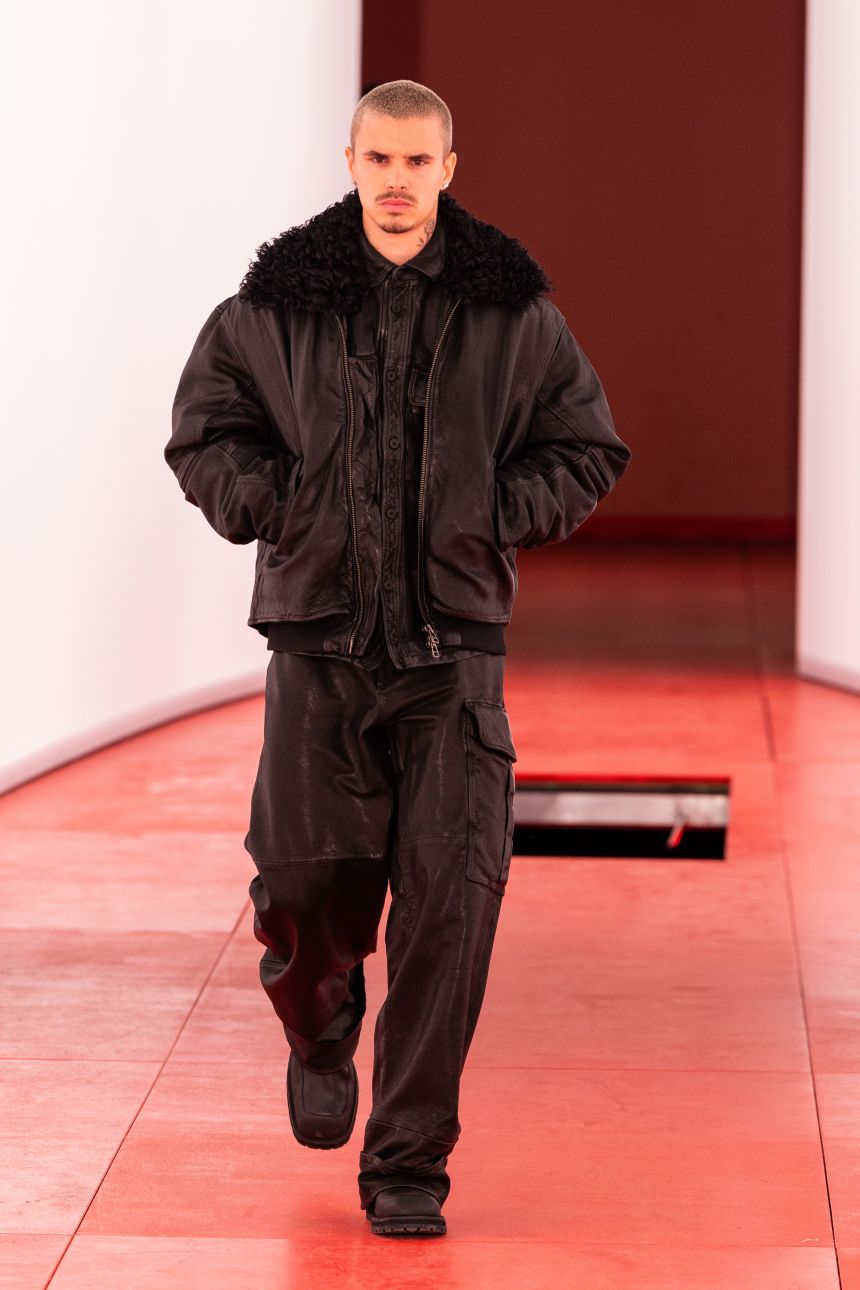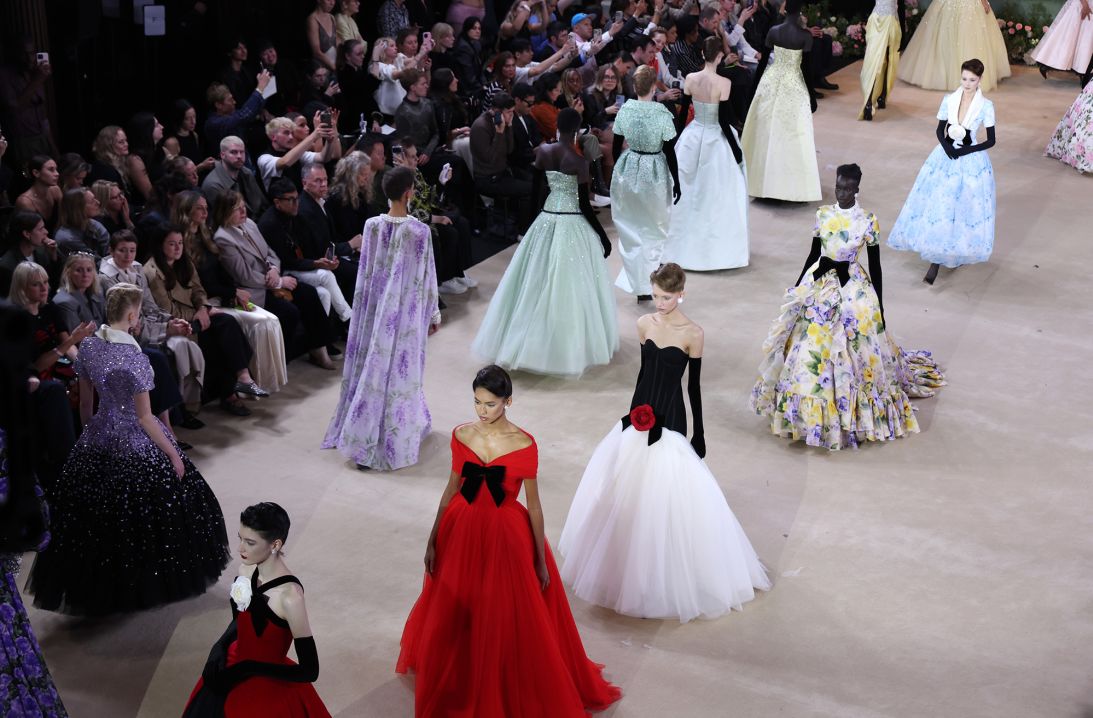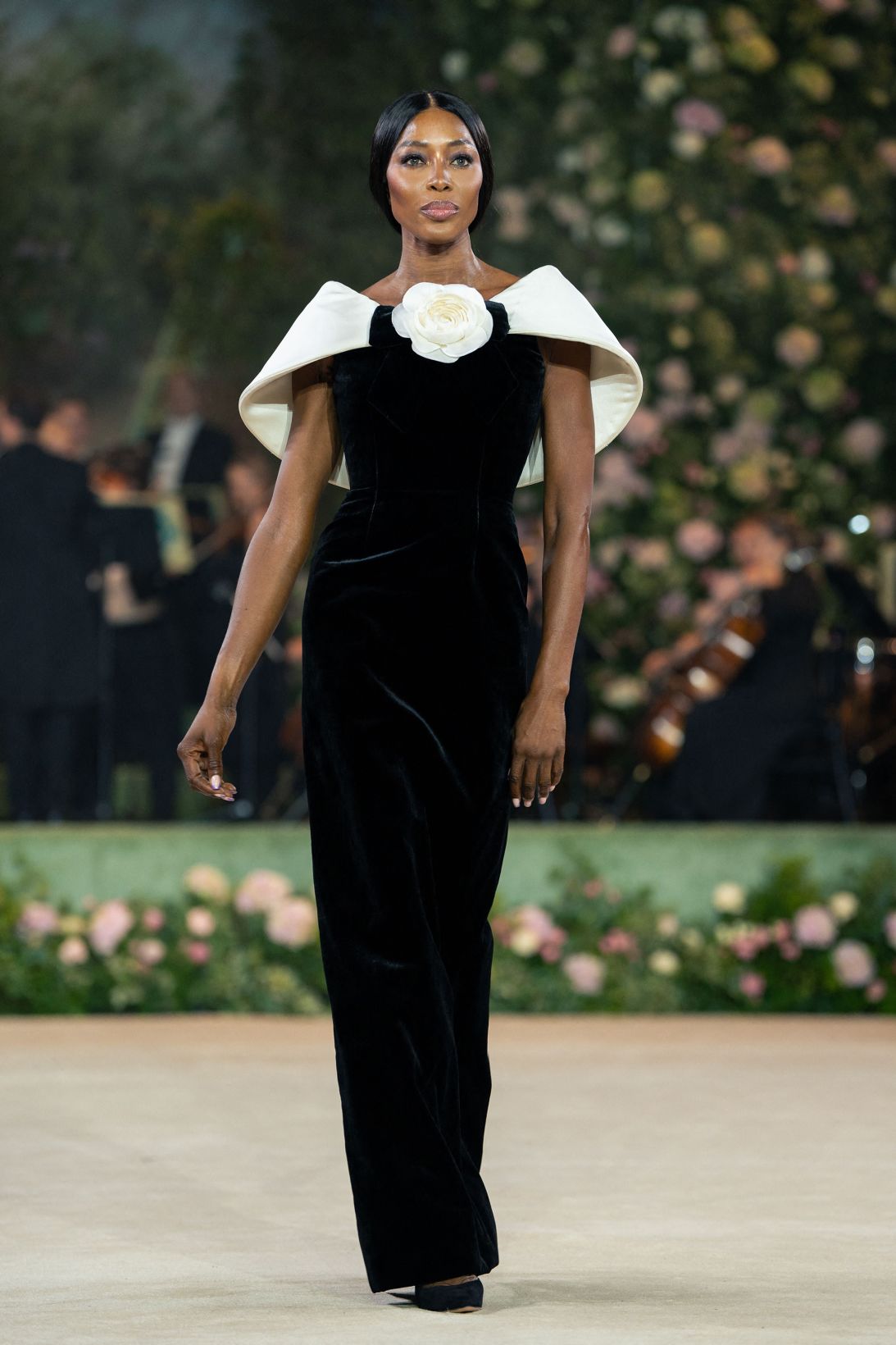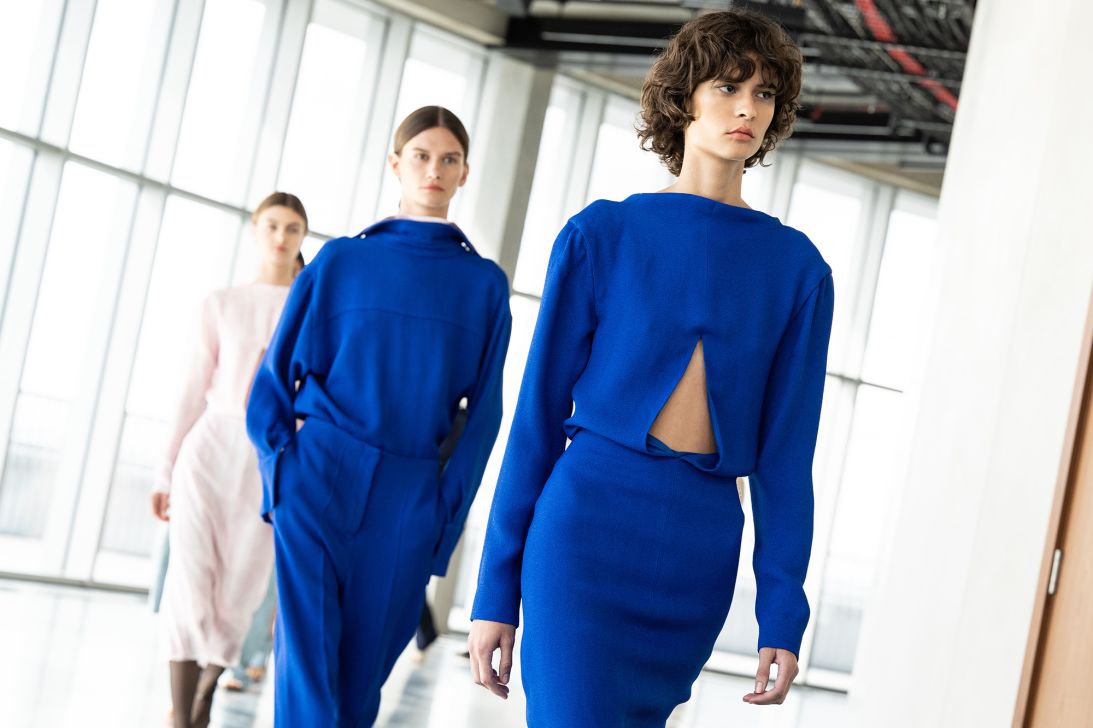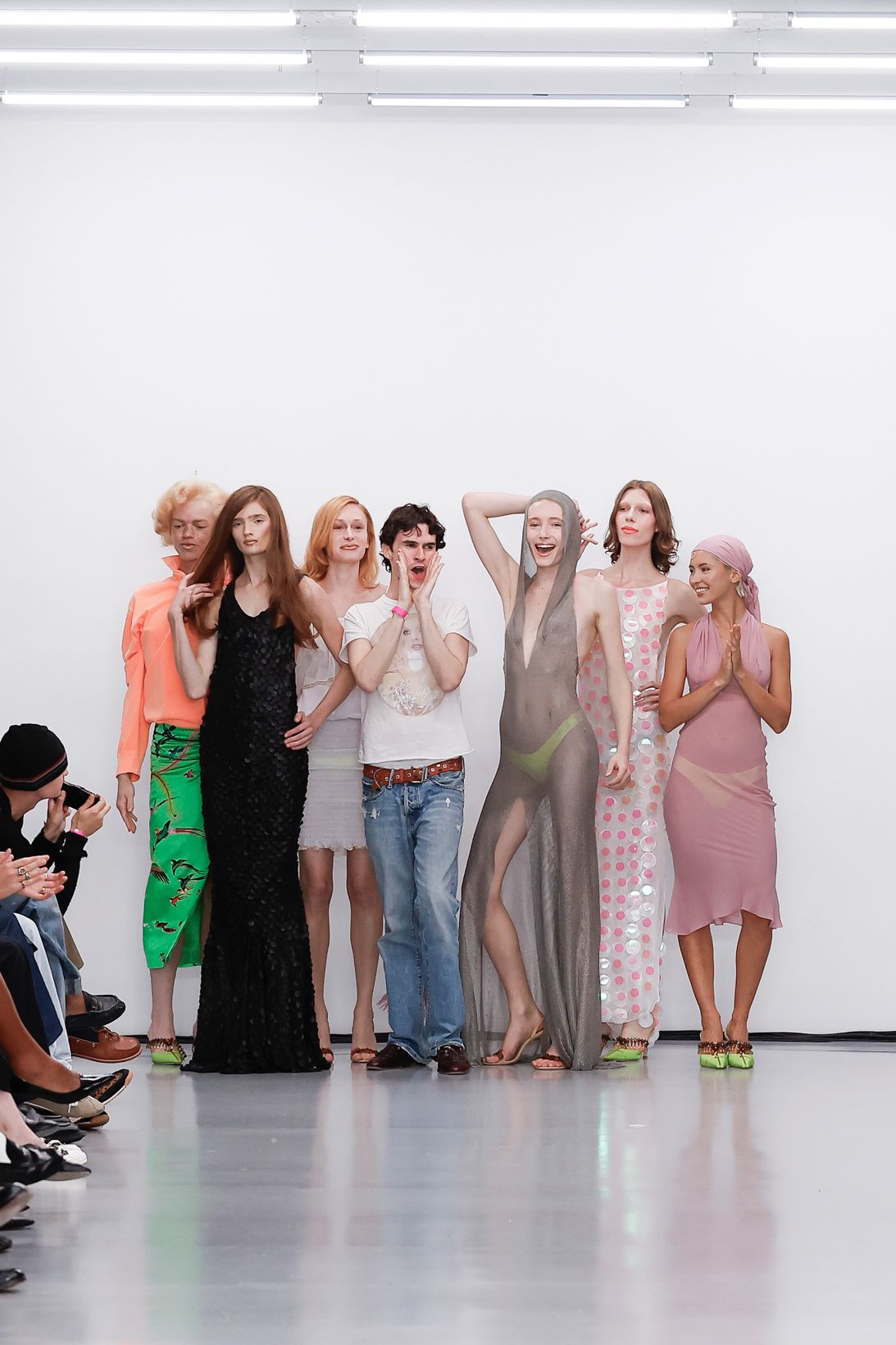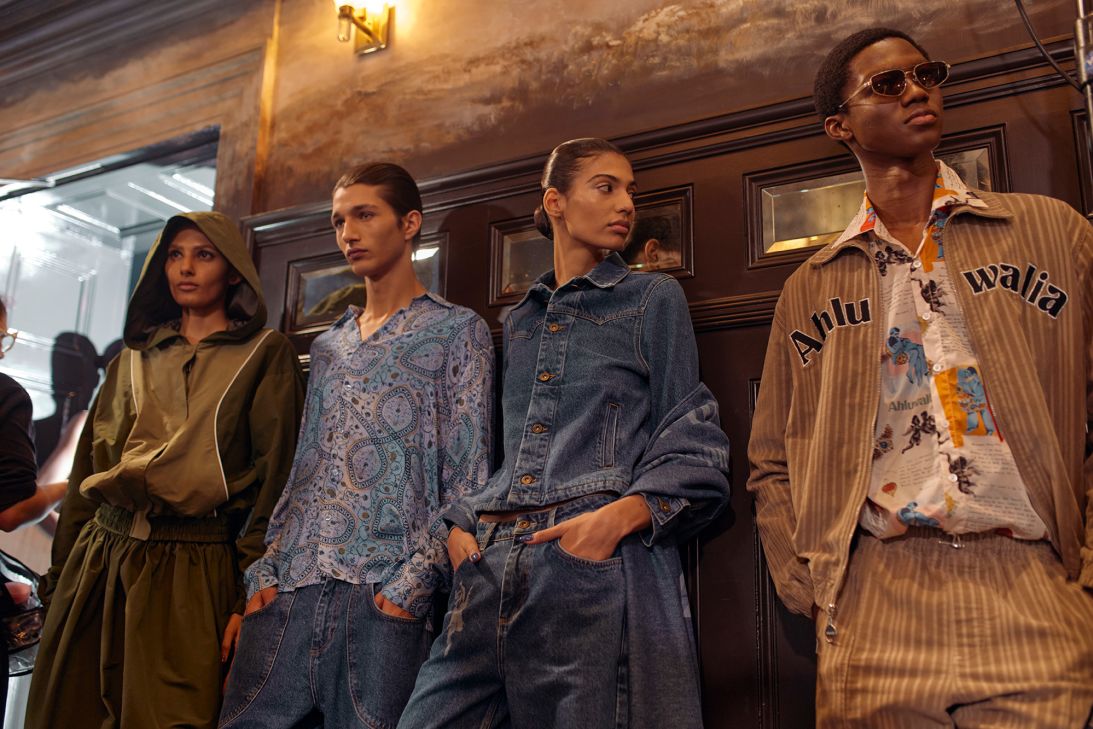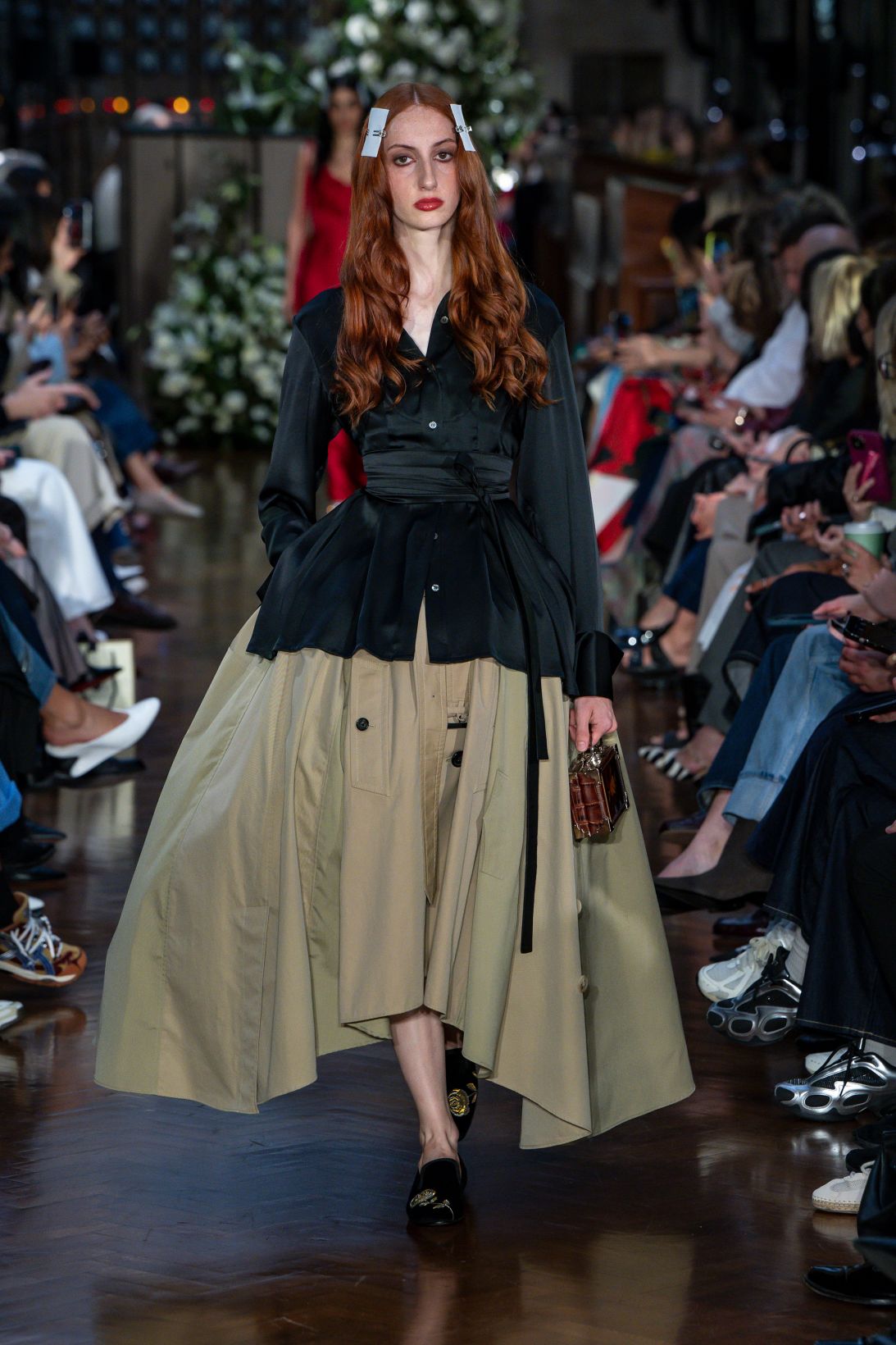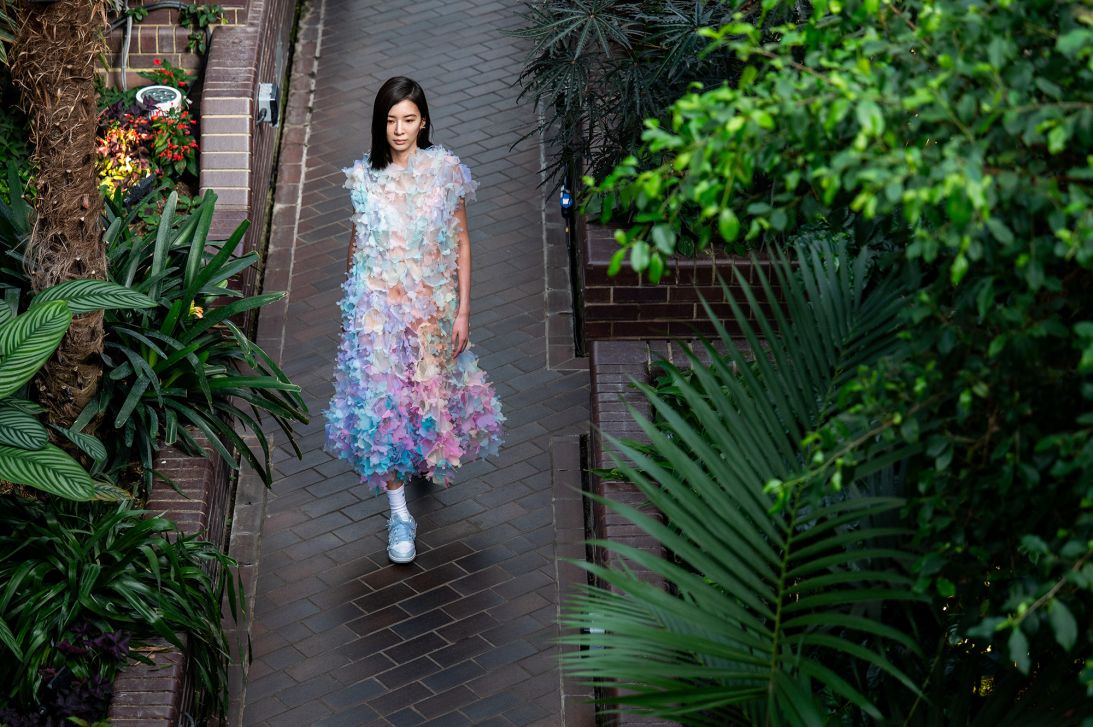It’s a new chapter for London Fashion Week. The first to take place under the British Fashion Council’s new CEO Laura Weir, who has made her message clear: “fashion matters.”
In her opening speech on Friday, Weir doubled down on her ambition to make London “a sensational showcase of creative fashion design talent” by reducing the barriers to entry and opening the schedule to “new energy, new thinking and new ideas.” That includes participation from new and returning brands, but also a wider breadth of international editors and buyers to platform the UK capital on the global stage. Backstage, designers both new and established were cautiously optimistic at the promises being made.
Already, there are signs that the city is being taken more seriously. Earlier in the week, members of Parliament gathered to discuss whether London Fashion Week was in the national interest — marking the first time the event had been debated at government level. “We know as an industry that there is often a lapse of respect for fashion and the contribution it brings to the UK,” Weir said. “The world is watching this week. Let us show them what only London can do.”
Indeed, there were blockbuster moments from the likes of Burberry — who closed out the week’s schedule with a star-studded show at Kensington Palace Gardens, attended by Elton John, Olivia Dean and Vanessa Williams — as well as H&M (the latter opened the week with a celebrity-filled catwalk walked by Romeo Beckham and with a performance from “Messy” singer Lola Young). But smaller designers also gave plenty to talk about — from noteworthy milestones, including the various anniversaries of Roksanda, Harris Reed, Ashish and Fashion East (the incubator that launched Jonathan Anderson’s career), to the innovation from newcomers including Oscar Ouyang, Maximilian Raynor and Johanna Parv.
“It really feels like there’s a renewed sense of energy in London right now,” said Daniel Fletcher, who designs for his namesake label as well as the Chinese brand Mithridate.
Brits vs. Americans
While members of the UK government were considering the country’s relationship to fashion, a handful of designers were distilling their own experience of British life onto the runway. Patrick McDowell, a Liverpudlian designer based in London, staged his first catwalk since winning the prestigious Queen Elizabeth II Award for Design in May. Dedicated to his home county, the collection was titled “Lancashire Rose,” and featured cinched blazers in jacquard fabric and sandy colored trench coats reimagined into strapless tops and full skirts. Fletcher, who presented his second collection for Mithridate, said he was inspired by two British archetypes: the country folk and the town dwellers. His fusion of these two “very different worlds” manifested in pink sequined party dresses layered over Oxford shirts and tall riding boots paired with sparkly underwear. “It’s a clash that shouldn’t really work, but somehow does,” he told CNN backstage.
But a few renegades creatively defected across the pond, looking instead at America for inspiration. The eponymous designer Yuhan Wang was inspired by David Lynch’s “Mullholland Drive” (2001), while the cult British-Bulgarian brand Chopova Lowena created an entire cheer squad with tinsel hair extensions and rhinestone eyeliner.
Inspired by the community and culture that comes with cheerleading, there were letterman jackets, T-shirts that read “Popular” in varsity typeface, and knitted hoodies emblazoned with pom-pom yielding models, who walked to the tune of AC/DC’s “Thunderstruck,” which has become synonymous with the Dallas Cowboys Cheerleaders following their hit Netflix show. “It was a lot of healing high school trauma in a way,” co-founder Emma Chopova said after the show. “It reframed things that happened to us, who were, and who we wanted to be.”
Streetwear, but not as you know it
Streetwear, a pillar of UK dressing for several decades, was made new again by a slew of designers redefining urban style. Yaku Stapleton, founder of YAKU, designed hoodies, capes and camouflage pants that looked like they were inspired by role-playing games (RPG). His models could have been downloaded from Zelda, with cargo pants that held axes and sword sheaths remade in fabric.
Lueder’s take on modern medieval feudalism, with knitted hoods and 3D-printed horned clogs, was inspired by the historical summer camps designer Marie Lueder went to as a child, where she role-played periods in history (costumes and all) from 300 BC to the end of the 15th century. For his first ready-to-wear collection the mononymic designer HARRI, known for his circus-like inflatable pieces, stuck with his signature fabric of latex. This time, however, there were bomber jackets, mesh shirts and Bermuda shorts — the kind of everyday clothing you’d see on the street, though some items, such as a cap and body vest, were aerated for old times’ sake.
Elsewhere, Johanna Parv continued to design for “the woman who is living in the city right now,” she told CNN, particularly “brave” cyclists, with nylon dresses, skirts and rain jackets that can be adjusted for whether one is commuting, working, partying or exercising.

Hips don’t lie
Royalty may be on the mind of many, following the new exhibition on Marie Antoinette’s style in London, which has many of the French queen’s extravagant gowns on show. Panniers — undergarments that sit on the hips to expand the silhouette outwards — have also been seen on recent red carpets. At the Venice Film Festival earlier this summer, Italian actor Alba Rohrwacher turned heads when she stepped out in a Dior haute couture gown complete with a protruding bustle.
No surprise, then, that voluminous hips were a seasonal feature on the runway. See the Chinese-Irish designer Simone Rocha whose dresses and skirts had wired crinolines on show, rather than hidden underneath. Backstage, Rocha shared her inspiration — a “disgruntled debutante” — and the desire to push herself by working with tried-and-tested materials albeit in new ways. She also nodded to her heritage with pops of red, an auspicious color in Chinese culture.
At Dilara Findikoglu, models looked like ladies in waiting that had risen from the dead; wearing antiquated corsetry that was dirtied and torn. Sharp hip bones jutted out above low-slung lace-up leather pants, at times accentuated further by draped body chains. Others were padded in ruffles and lace. The collection was titled “Cage of Innocence,” in a nod to the silenced women of history. Findikogulu’s uncompromising and subversive vision, along with her meticulous understanding of the female body, has made her one of London Fashion Week’s hottest tickets.
Weaving a new thread
One notable feature of London designers is their desire to experiment and seek alternatives to the status quo.
Backstage, Oscar Ouyang said the word that summarized his debut show was “reinvention”. He experimented with bird feathers, seen on the collar of a shortened car coat and a pair of shorts. Fresh-faced models wore sprigs of down in their hair, like the lost boys in “Peter Pan.” The Beijing-born designer, who studied a MA course in knitwear at Central Saint Martins, didn’t stop there: He used a combination of machine and hand-knit techniques to create cartoon-sh proportioned T-shirts and braided bags and tunics out of straw.
Pauline Dujancourt, a womenswear designer also specializing in knitwear, was also inspired by the symbolism of birds. Dujancourt’s hauntingly beautiful gowns were a mixture of chunky Argyle knit, delicate lace and frothy tulle ruffle — but the sum was greater than its parts. “I discovered all those techniques from my grandmother,” Dujancourt told CNN after the show. She also emphasized the importance of craft, and modernizing the artform for new generations. “It’s really important to go back to that but offer a new rationale so people will actually want to knit and want to wear knitwear.”
Elsewhere, rising designers Paolo Carzana and Susan Fang continued to challenge material boundaries, resulting in garments that are thoughtfully designed, adaptable and aesthetically unique. Carzana’s selling point is using repurposed materials and vegetable dyes, which encourages a more considered approach to clothes (not to mention, unexpected color pairings like violet with burnt orange). They popped against the backdrop of books in the British Library, where the show was held. Fang, meanwhile, took to the leafy conservatory of the Barbican, where she showed dresses made using beads and 3D-printed patchwork that looked like flower petals as the models — including Korean it-girl Irene Kim — walked.
With contributions from CNN’s Kati Chitrakorn.
